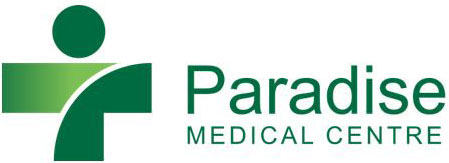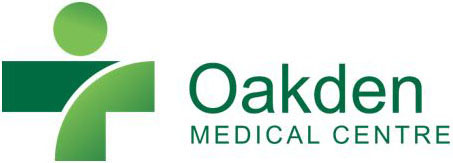Breastfeeding your baby
Breastfeeding is the most natural way to feed your baby. It provides all the nutrition your baby needs during the first six months of life, satisfies their hunger and thirst at the same time. It also helps to create a loving bond between you and your baby.

Breast milk has a number of health benefits for your baby:
- breastmilk contains all the nutrients your baby needs for the first 6 months
- it also satisfies the baby’s thirst
- it helps develop the eyes and brain and other body systems
- the act of breastfeeding helps with jaw development
- it helps the baby resist infection and disease, even later in life
- it reduces the risk of obesity in childhood and later in life
- it contains a range of factors that protect your baby while their immune system is still developing
Breastfeeding also has many benefits for mothers. Not only is it convenient, cheap, and always available, it also:
- reduces the risk of haemorrhage immediately after delivery
- reduces your risk of breast and ovarian cancer
- is convenient and cheap
- can soothe your baby
- prolongs the amount of time before you get your period again
Getting started
You can usually start breastfeeding within the first hour or so of your baby’s birth.
The first milk in your breasts is called colostrum. This milk is quite thick and may be yellowish in colour. It’s very rich in protein and antibodies that will help give your baby a great start in life. Mature breast milk gradually replaces the colostrum in the first few days after birth.
Ideally, you should try to maintain close skin-to-skin contact with your baby immediately after the delivery. If you hold your baby against your chest and between your breasts for a while, there’s a good chance he or she will find your nipple and begin feeding without any help. Your midwife or a lactation consultant can also help guide you and your baby into position.
Good positioning and attachment
The key to successful breastfeeding is comfortable positioning and good attachment.
If your baby is well-attached to your breast you are less likely to experience breastfeeding problems like cracked nipples, and your baby will get the most amount of milk out of your breast.
There are lots of different ways to position and attach your baby for breastfeeding, but here are some general tips:
- Sit comfortably with your back and feet supported – you can be fully upright or you might prefer to be laying back a little bit.
- Unwrap your baby and hold him or her close against you.
- Turn your baby on his or her side so they are wrapped around you with their nose level with your nipple.
- Make sure you support your baby’s neck and shoulders with your hand, but don’t hold your baby’s head — allow him or her to find the best position for attaching to your breast.
- Bring your baby to your breast, not your breast to your baby.
- Gently brush your baby’s mouth with the underside of your areola (the area around the nipple) — this will usually cause your baby to open their mouth very wide.
- When your baby opens their mouth, bring him or her quickly to your breast so they take a good mouthful of breast tissue.
- As you bring your baby to your breast it can help to hold your breast like you would a sandwich, with your nipple aimed at the roof of your baby’s mouth.
Signs that your baby is well-attached include:
- Your baby’s chin should be tucked into your breast, and his or her mouth should be wide open with the bottom lip curled back.
- Your baby’s nose will be clear or only just be touching your breast.
- More of your areola will be visible above your baby’s top lip than below it.
- Your baby’s cheeks should not be sucking in and there should be no clicking noise during sucking.
- There should be no nipple pain — but you might feel a stretching sensation as your nipple adjusts to breastfeeding.
For more information about correct positioning and attachment visit the Australian Breastfeeding Association website.
Getting a good attachment - video
Video provided by Raising Children Network.
How often will my baby feed?
During the first week of life most babies will gradually develop a pattern of feeding eight to twelve times in a 24-hour period. You should feed your baby whenever he or she shows signs of hunger.
You will know your baby is getting enough breast milk if he or she:
- is feeding at least 8 times a day (with some of those feeds occurring overnight)
- has at least 5 wet disposable nappies or 6 to 8 wet cloth nappies per day
- has 2 or more soft or runny bowel movements per day for around the first 6 weeks of life (babies have fewer bowel movements once they reach about 6 weeks)
- is gaining weight and growing as expected
- is alert when awake, and reasonably contented
Building your milk supply
When it comes to breastfeeding, supply equals demand. The more you feed your baby, the more milk your breasts will make. Some tips for establishing and maintaining a good milk supply include:
- let your baby feed until he or she stops sucking and swallowing and lets go of your breast, and then offer your second breast
- offer your breast at night as well as during the day
- avoid giving any extra feeds from bottles, as this reduces your baby’s need to suck at your breast and reduces your milk supply
- avoid the use of dummies (pacifiers)
Managing problems
Breastfeeding is natural, but it’s also a learning process for you and your baby. Sometimes problems develop. Don’t be afraid to ask for help at any stage during your breastfeeding journey.
For help with breastfeeding problems contact your midwife or lactation consultant, or call the Breastfeeding Helpline on 1800 mum 2 mum (1800 686 268).
More information
The Australian Breastfeeding Association hold classes in breastfeeding for expectant mums.
Sources: Australian Breastfeeding Association (Breastfeeding FAQs). Opens in a new window.Australian Breastfeeding Association (Attachment to the breast). Opens in a new window.Australian Breastfeeding Association (Increasing supply). Opens in a new window.Eat for Health (Infant feeding guidelines). Opens in a new window.



